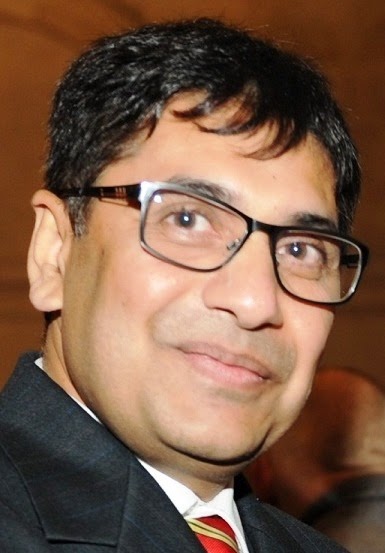New York's New Chapter: What Zohran Mamdani's Victory Means for Cities Everywhere
Analysis by Prashant Shukla, Member, Strategic Policy Committee (SPC), South Dublin County Council (SDCC), Ireland
Zohran Mamdani's election as Mayor of New York City marks a significant moment in modern urban politics. At 34, he becomes the city's first Muslim and South Asian mayor, but the meaning of his victory goes far beyond identity. New Yorkers chose Mamdani because they wanted a decisive response to an issue that has steadily shaped daily life: the rising cost of living and the growing fear among residents that the city is becoming unlivable for all but the wealthy.
As a member of the Strategic Policy Committee in South Dublin County Council, I observe similar anxieties across Irish towns and cities, though on a smaller scale. Housing shortages, wage pressures, and the cost of childcare are now universal concerns. In every urban centre, a shared question is emerging: Who is the city for — the people who live in it, or the capital that flows through it?
Mamdani won because he chose to answer this question clearly.
A City at the Breaking Point
New York has witnessed a widening gap between those who can secure stable, decent housing and those being priced out. Essential workers — teachers, nurses, transport staff, retail and service workers — those who keep the city operating — are increasingly unable to remain in the neighbourhoods they serve.
Mamdani did not allow this crisis to be treated as an accident or an economic inevitability. He argued that affordability is a political choice. When he told voters that New York must work for its residents above all else, they responded.
Housing: The Core of the Mandate
Mamdani's housing strategy focuses on two linked actions:
1. Freezing Rent Increases for Rent-Stabilised Homes
This offers immediate relief to nearly a million households, slowing displacement and preventing the steady erosion of neighbourhood stability.
2. Constructing 200,000 Units of Social and Deeply Affordable Housing
This is the transformative element. Rather than relying on incentives or market persuasion, the city would directly build housing — a model proven successful in Vienna, Helsinki, and Singapore. The principle is simple:
Housing is a necessity, not merely an investment vehicle.
The aim is not to eliminate the private housing market, but to rebalance it — ensuring that public need is given equal standing alongside private return.
Public Services as Economic Infrastructure
Mamdani's expansion of services is presented not as a gesture of generosity, but as an economic logic.
- Fare-free buses lower household transport costs and reduce congestion.
- Universal Childcare supports parents' ability to work and increases economic participation, particularly among women.
When essential services become reliable, accessible, and affordable, the entire urban economy becomes more productive and resilient.
The Role of Investors: The Case for Balance
However, a necessary part of this conversation is ensuring that reform does not inadvertently undermine the contributions of those who drive innovation and investment in the city.
Investors — from technology firms to infrastructure developers — bring jobs, capital, and modernisation. They help build transit systems, research facilities, housing developments, clean energy grids, and digital services that improve daily life. They are not opponents of progress; they are often crucial partners in achieving it.
The challenge, therefore, is not to diminish investment, but to set clear rules that balance public interest with private participation.
Cities thrive when:
- Investment is encouraged,
- Wealth creation is recognised,
- And public needs are protected through strong regulation and fair taxation.
Mamdani's success will depend on maintaining this equilibrium. If policies tilt too sharply against investors, the city risks slowing economic growth and losing its innovative edge. If policies favour investment without regard for residents, inequality will deepen. The test is to govern between these extremes.
The Political Road Ahead
Mamdani faces a practical challenge: New York cannot raise taxes or restructure zoning powers without approval from the State Legislature in Albany. To move forward, he must negotiate alliances, build legislative partnerships, and withstand organised opposition from real estate and corporate lobbying networks.
This next phase will determine whether his agenda remains aspirational or becomes operational.
Public Safety: Addressing Causes, Not Just Symptoms
Mamdani proposes a preventative model of public safety — one that invests in mental health services, housing stability, youth programmes, and community support. Research consistently shows that when social stability improves, crime falls.
Yet this approach requires time and trust. If crime trends fluctuate, critics will call for a return to policing-first strategies. Clear communication and transparency will be essential.
What This Means Beyond New York
From Dublin to New York, the same pressures now define urban life:
- Rising rents
- Strained public services
- Unequal housing access
- Growing tension between local needs and capital flows
New York's new direction will serve as a global reference point.
If Mamdani succeeds, he may establish a modern model of urban governance — one that balances investment with fairness and demonstrates that major cities can remain livable for ordinary residents.
If he fails, cities may retreat to familiar patterns: growth without inclusion, development without affordability, ambition without accountability.
A Turning Point Begins
New York has taken a bold step. It has chosen to test whether a global city can protect affordability, dignity, and social stability — while still encouraging innovation and investment.
The world is watching, not as spectators, but as peers facing the same questions.
For those of us in municipal leadership, including in South Dublin, the lesson is clear: cities must continually renegotiate the balance between public responsibility and private enterprise.
New York's choices today will shape not only its future, but also the future of cities everywhere.
**********




Comments